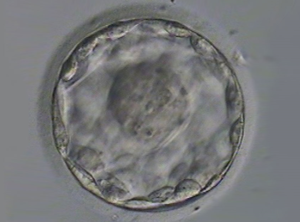Fresh Embryos From Fresh Donor Eggs Improve IVF Birth Rates

A retrospective study published by JAMA and conducted by researchers at Brigham and Women’s Hospital found that transferring fresh embryos grown from freshly retrieved donor eggs resulted in a higher live birth rate compared to frozen (cryopreserved and thawed) embryos from freshly retrieved donor eggs.






 In the first randomized trial analysis of estrogen therapy after bilateral oophorectomy, women who underwent surgical menopause followed by estrogen therapy in their 50s showed a nearly one-third reduced risk of mortality over 18 years compared to women who received a placebo instead of estrogen. Older women (particularly age 70 and over) showed no such benefit and experienced a negative net effect from hormone therapy.
In the first randomized trial analysis of estrogen therapy after bilateral oophorectomy, women who underwent surgical menopause followed by estrogen therapy in their 50s showed a nearly one-third reduced risk of mortality over 18 years compared to women who received a placebo instead of estrogen. Older women (particularly age 70 and over) showed no such benefit and experienced a negative net effect from hormone therapy.
